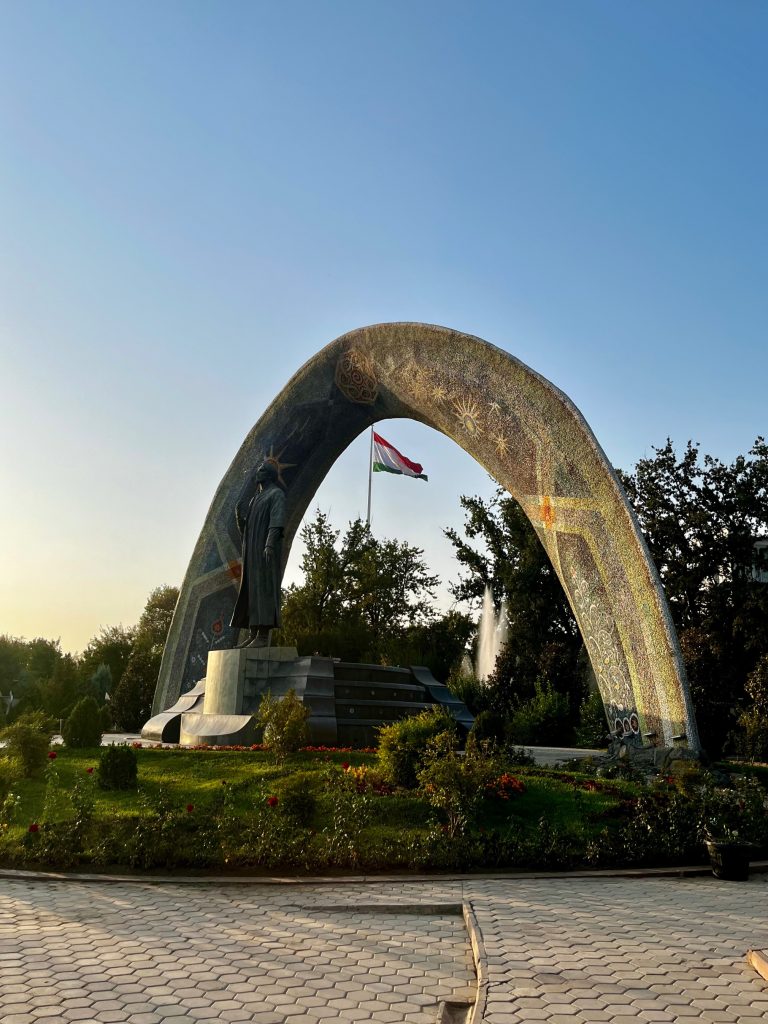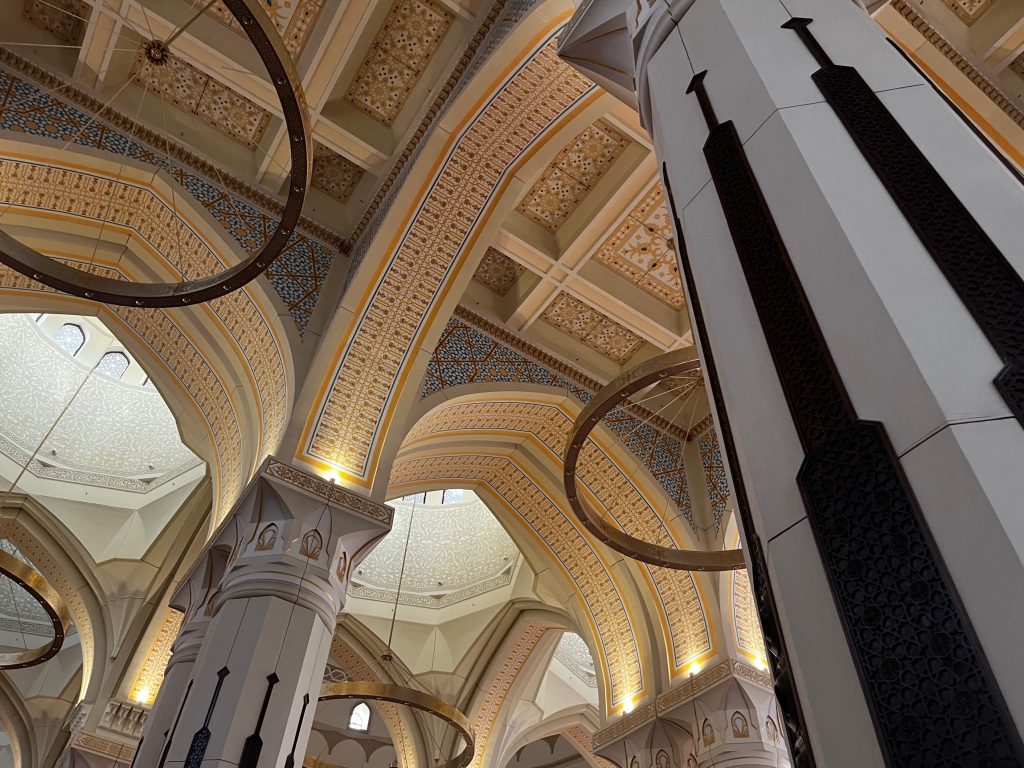The nations of Central Asia seem to have a particular penchant for trying to construct “the biggest” of various things.
Even in ancient history, the Silk Road capital of Merv was once the largest metropolis on the planet. Meanwhile, Samarkand, Bukhara, and Urgench battled it out to be considered the “intellectual capital” of the Old World.
They say that old habits die hard, so things didn’t exactly change when the five post-Soviet Central Asian states gained independence in 1991. Turkmenistan, for example, tried to build the region’s biggest flagpole… before Tajikistan beat them to it in 2011 by erecting the largest one in the entire world.
And for a region with a reputation for practicing a moderate and cultural form of Islam, it may seem bizarre to outsiders how the countries of Central Asia are out-competing themselves to build increasingly large and extravagant mosques.
This trend, however, does not necessarily reflect an increase in religious devotion, although that is a topic of debate. Instead, it is more representative of a desire to showcase national identity and architectural prowess, by using these grand new mosques as symbols of cultural pride and political influence.

One of the most prominent examples of this is the Dushanbe Central Mosque, which opened in 2019 with the capacity to hold 25,000 worshipers in the building alone. Yet for a country which remains the poorest in Central Asia – as well as fiercely secular – there has been criticism from the international community over this use of money. That some of the building was designed and financed by Qatar heightens these controversies further.
Here, we’ll look at not only what it is like to visit the Dushanbe Central Mosque, but also what its construction says about Tajikistan and Central Asia today.
So… is Tajikistan Muslim?
The short answer is yes. Tajikistan is, by most accounts, at least 99% Muslim, owing to its Persian heritage and lack of ethnic Russians and other Christian minorities in the country.
However, this does not mean the country is like, say, Saudi Arabia.
The Tajik government’s relationship with organized religion can be described as complex in the extreme. One recent article out of the country discusses the government’s efforts to ban both “provocative Western clothing” and “black garments,” a not-so-subtle swipe at items such as the Hijab and Niqab.
The government wants to promote traditional Tajik clothes, which are generally colourful and feature neutral Western garments such as trousers and dresses.
Rumours abound that the government is about to ban the hijab entirely, something which would be difficult to enforce given how many women we saw wearing them on the streets of Dushanbe.

And while most Tajiks don’t eat pork, many consume alcohol enthusiastically. Ethnic minorities in the Pamir Mountains are also Ismaili Muslims, a branch of Shia Islam who have the Swiss-based Aga Khan as their spiritual leader. Unsurprisingly, this is a very liberal branch of Islam.
The country is also fiercely secular, officially to avoid interference in state affairs. However, many observers say that this is used as a front to crackdown on political opposition, and to avoid a spillover of religious extremism from neighbouring Afghanistan.
All of this provides a unique lens from which to bring a tour group to the nation’s largest (and newest) mosque – the Dushanbe Central Mosque.
What is it like to visit?
We visited the Dushanbe Central Mosque on our Five Stans tour, as part of a (rushed) half-day introduction to Dushanbe. Tajikistan is a movingly beautiful yet extremely mountainous country, so our entire morning was spent traversing from the north to Dushanbe, via the notorious “Tunnel of Death.”
Despite being late September, it was still in the mid-30s as we approached late afternoon. This meant that many of us turned up inappropriately dressed to visit the Mosque. Thankfully, the staff there were understanding and accommodating and found us some extremely unique garments to use. My personal favourite was a chador adorned with the Louis Vuitton logo – official merchandise I’m sure – as well as their impressive range of hijabs-cum-babushka scarfs.
Our tour started half an hour before evening prayers, so we were leaving the mosque just as the adarn sounded to the faithful. Granted, it was a Wednesday, but the few dozen worshippers scattered across one of the region’s largest mosques didn’t exactly show the place to be bustling.

Both our mosque and local guide assured us that Dushanbe Central Mosque achieves full capacity during Eid and other major holidays. While this claim seems to be very true, it was difficult to picture this as we stood in the empty courtyard.
Regardless of this, though, the building was seriously impressive, albeit a bit “too” glam for those of us more used to crumbling Soviet architecture. Dushanbe is interesting in the sense that it is trying to become the next “Dubai,” despite Tajikistan having neither the money nor physical topography of the Arabian Gulf.
It was obviously well-designed. The cool and welcoming interior – especially needed after the baking Tajik sun – as well as individual prayer spots, meant that it was somewhere I could imagine people using to pray contently in.
How has the mosque gone down in Dushanbe?
The honest answer is that it is difficult to say. Our guides and the few locals we spoke to were proud of the mosque. They said that there is no reason why Tajikistan should not have buildings as beautiful as those in more “developed” countries – this was initially difficult to argue against.
Some Tajik friends of mine living abroad, however, are annoyed at such a wasteful use of money. They also object to how it has let Qatar further influence their national affairs, and question how much the Dushanbe Central Mosque will actually be used for its intended purpose.
Like anywhere, however, we recommend visiting for yourself and forming your own opinions. Thankfully, we visit Dushanbe five times a year – once on our Pamir Highways adventure and four times as part of the Five Stans adventure.
Dushanbe also provides a fascinating mix of architectural styles and periods. To take advantage of this, we can help you book a private tour of the city to include a variety of these, of course including the Dushanbe Central Mosque.
Either way, we’ll see you in Dushanbe soon!





